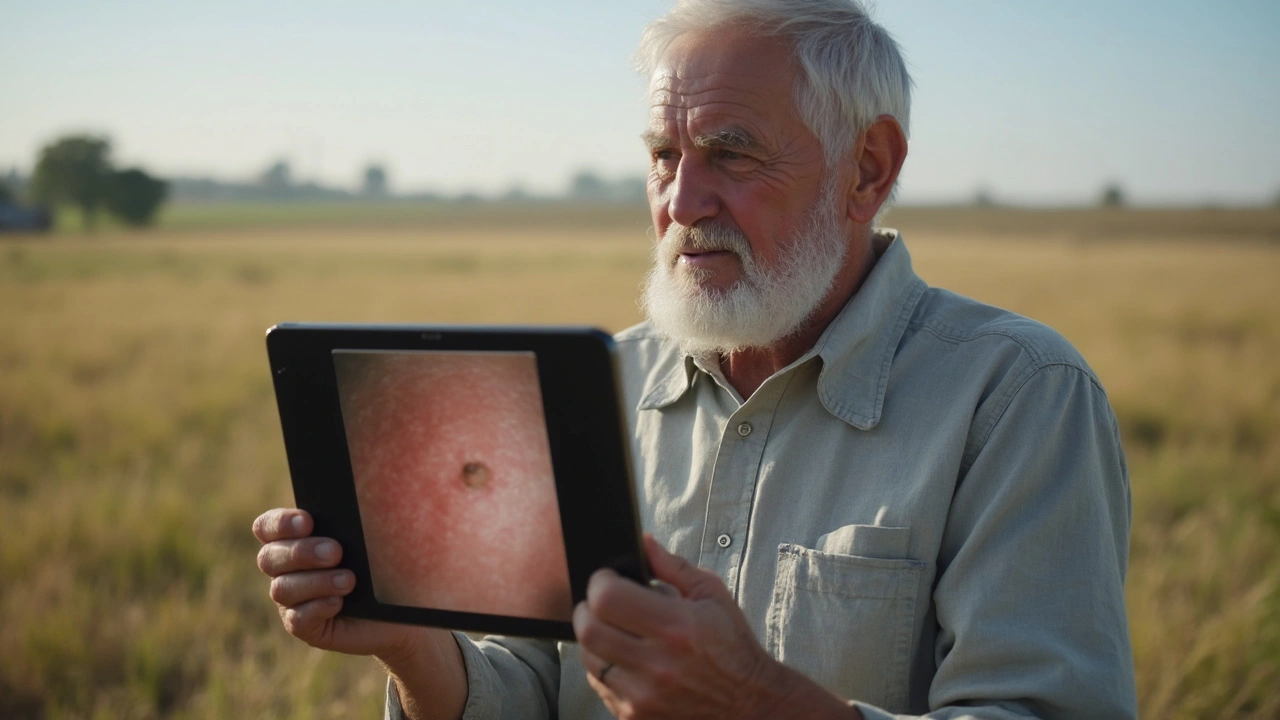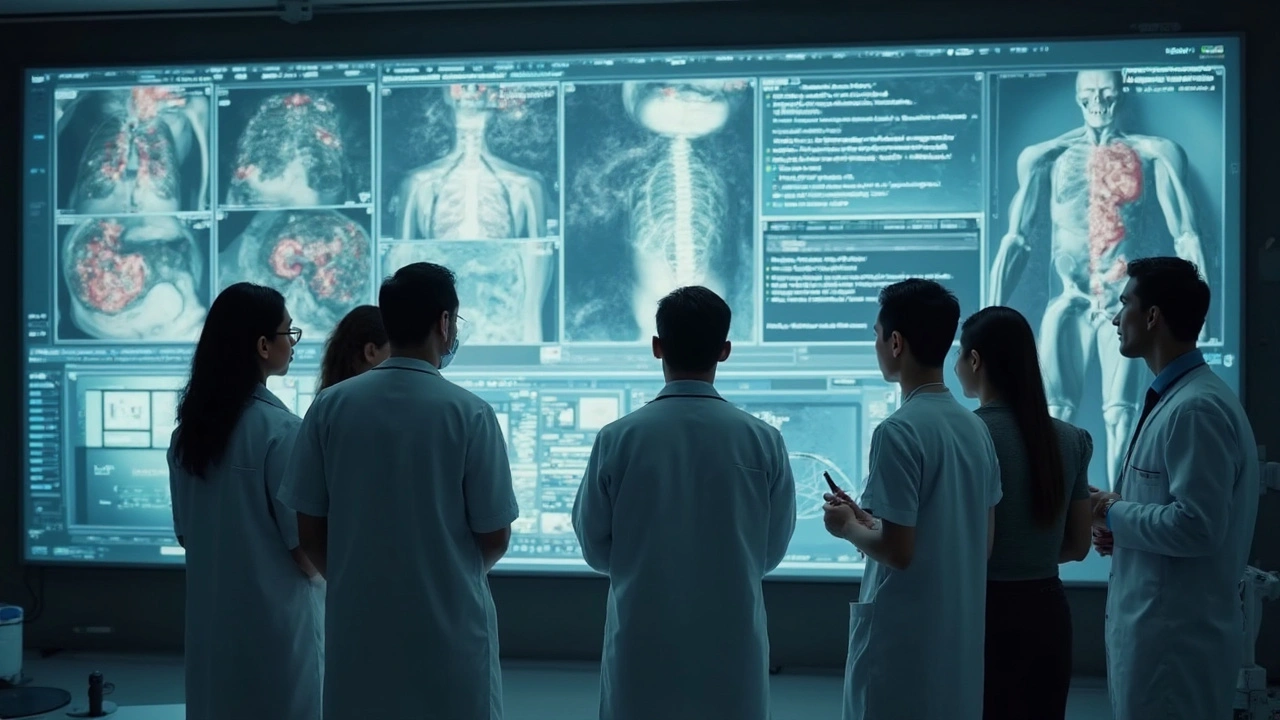It’s wild to think that just a handful of years ago, video calls with doctors felt like science fiction. Now, for melanoma patients worried about every new mole, that phone or laptop can be a lifeline. Getting fast, expert advice from the couch isn’t just a convenience—it can quite literally change lives.
Why Telemedicine Matters for Melanoma Patients
Lugging yourself across town or even to another state for a specialist’s opinion? That’s exhausting, especially if you’re dealing with the anxiety that comes with melanoma. Fast facts: Melanoma is the most deadly form of skin cancer, but if you catch it early, survival rates skyrocket above 99%. Timing is everything. That’s where telemedicine walks in and flips the script.
During the COVID-19 years, telemedicine use exploded—not just for coughs and colds, but also for dermatology. Melanoma patients, in particular, found relief: fewer waiting rooms, less exposure to germs, and instant access to world-class specialists. For people in rural states like Montana or Wyoming (where specialists are few and far between), telemedicine often means the difference between a same-week opinion versus a drive or flight that could be delayed for months.
The process looks almost too easy: snap a high-quality photo of your skin concern, upload it to your health provider’s secure platform, and wait for the dermatologist’s review. Sometimes it’s just a virtual chat. Other times, it’s a quick back-and-forth with your doctor, no white coats or clipboards required. Only 20% of people in the U.S. live within an hour of a major cancer center. For the rest, telemedicine bridges the gap in a way that no in-person appointment could.
Breaking Down Common Telemedicine Services for Melanoma
Telemedicine is more than FaceTime with your doctor. For melanoma care, there are several key services making a massive impact:
- Online skin checks: Dermatologists analyze sent-in images, give advice, and track moles over time. No guessing if you need an urgent biopsy or just a reminder to wear sunscreen more often.
- Virtual follow-up appointments: After surgery or while on a new medication, check-ins can happen through the screen. Doctors review healing wounds, check for side effects, and update prescriptions without you needing to leave the house.
- Second opinions: Not sure if your diagnosis is right? Upload your records and get fresh eyes on your case in days instead of waiting for an opening months away.
- Counseling and support: Melanoma can mess with your head. Telemedicine offers easy access to counselors who understand cancer’s psychological impact. Talking to someone who simply gets it can make tough days feel a bit lighter.
A study published in 2023 showed 67% of melanoma follow-ups could be handled entirely online without a single reduction in patient safety or satisfaction. Even better, 89% of people using telemedicine reported lower stress around appointments—no surprise for those juggling jobs, family, and chronic health stuff.

What Patients Should Know Before Their Virtual Appointment
Sometimes, patients worry that sending a photo or hopping on a video call can’t possibly beat an in-person skin check. But here’s what tips the scale: With today’s phone cameras, a well-lit, close-up image can pick up details many eyes miss. Doctors are trained to spot the subtleties on-screen and often ask for updates over a few weeks to watch changes in real time.
Of course, there’s an art to taking the perfect skin photo. Try these tips for a better telemed experience:
- Use your phone’s main camera instead of the selfie lens. The quality is usually way better.
- Snap the pic in natural light if you can—stand by a window or even step outside for a second.
- Place a coin or ruler next to your mole for size reference. That helps your doctor compare changes over time.
- Take a few photos: close up, medium distance, and one showing the mole’s spot relative to other body landmarks.
- Double-check your provider’s platform is secure. Privacy matters.
During your virtual chat, have these things ready:
- Notes about when you first noticed the mole or spot.
- Any symptoms (itching, bleeding, recent changes in color or shape).
- Your list of medications and allergies, just in case new prescriptions are needed.
- Questions you want to ask, written down so you don’t forget in the moment.
If your doctor decides a biopsy or in-person visit is necessary, they’ll explain why and help you set up the next steps. Telemedicine lets you clear up most worries from home but never skips over essential treatment if it’s truly needed.
How Telemedicine Is Reshaping Cancer Care Beyond the First Visit
The real magic happens after that first appointment. With melanoma, long-term care is vital, because recurrences can pop up years down the line. Telemedicine makes ongoing surveillance almost effortless. No need to rearrange your life every time you notice a suspicious spot—quick consultations are just a click away. Plus, digital records keep everything organized. Your photos from last month, last year, or even two years ago are all in one secure place for your doctor to compare and spot subtle changes.
| Telemedicine Benefit | Traditional In-Person Visit | |
|---|---|---|
| Average Time To Specialist | 2-3 days (telemed) | 2-6 weeks (in person) |
| Travel Cost (US Avg) | $0 (at home) | $60-$200+ (fuel, parking, hotels) |
| Average Patient Stress Level (surveyed, 2022) | Low | Medium to High |
| Access From Rural Areas | Yes | Limited |
For folks who’ve undergone surgery or immunotherapy (common in advanced melanoma), telemedicine helps keep tabs on side effects. A change in skin around the surgical site? Unexpected swelling? Upload a photo, send in your notes, and the specialist can review instantly. If it’s nothing, peace of mind is yours within hours. If it’s more serious, you can get prioritized for in-person care, skipping the waitlist.
Telemedicine also unlocks world-class knowledge. Instead of being limited to your nearest dermatologist, you can book with a top melanoma expert anywhere in your state—or even out-of-state, depending on local rules. For rare, tricky cases, this makes a world of difference.

The Future: Smart Tech, AI, and What’s Next for Melanoma Patients
Fast-forward to now, and things are only getting better. Innovative providers are combining telemedicine with AI, letting computer algorithms flag changes in moles that might be easy to miss by the naked eye. These tools don’t replace the doctor but add an extra safety net. If you’ve ever played spot-the-difference puzzles, you know how two photos that look nearly identical can hide critical details. AI does that in seconds, scanning through thousands of pixel-level changes.
There are also mobile apps designed for melanoma surveillance. Some connect directly to board-certified dermatologists, turn your phone into a mini-dermoscope, or even send reminders for your next check. In 2025, privacy is front and center, so always stick with apps or platforms endorsed by reputable medical associations or large cancer centers.
Future telemedicine might involve smart home cameras designed for medical use, real-time updates shared with your doctor’s team, and global second opinions slated in just hours, not weeks. For melanoma patients, that means almost any worry—big or small—can be checked with a team of specialists at your back.
But as things get advanced, the basics stick around: take good images, follow your doctor’s advice, use sunscreen, and don’t let a suspicious spot wait. Telemedicine fills the gaps and takes away some of the fear by making expert help feel accessible, fast, and normal.

Tionne Myles-Smith
July 4, 2025 AT 15:40This literally saved my life last year when I spotted a weird mole during lockdown. I was terrified, but my dermatologist did a virtual check-in within 24 hours and told me to get it biopsied right away. Turns out it was Stage 1 melanoma. I’m alive today because I didn’t have to wait weeks for an appointment. Thank you for writing this.
Jordyn Holland
July 4, 2025 AT 21:27Oh please. You're all acting like this is some revolutionary breakthrough. My grandma had a dermatologist come to her house in 1978. People just didn't have smartphones back then. Now we're celebrating convenience as if it's medical enlightenment. And don't even get me started on AI 'mole scanners'-you think a machine can replace a trained eye? Please.
Jasper Arboladura
July 5, 2025 AT 05:53The data cited is cherry-picked. Most studies show telemedicine for melanoma has a 12-18% false-negative rate compared to in-person dermoscopy. The 99% survival rate only applies to Stage 0 and IA. You're conflating accessibility with efficacy. Also, phone cameras lack the spectral resolution of a dermoscope. This is dangerous oversimplification.
Joanne Beriña
July 6, 2025 AT 21:18Why are we letting foreigners run our healthcare? My cousin got a 'second opinion' from some guy in India who told her to 'just watch it.' She had to go to Mayo Clinic three months later and they found it had spread. Telemedicine is great for lazy Americans who don't want to leave the couch. We need real doctors, not pixelated guesses.
ABHISHEK NAHARIA
July 7, 2025 AT 19:03While the utilitarian benefits of telemedicine are evident, the epistemological rupture in patient-physician dynamics cannot be ignored. The tactile dimension of physical examination, the non-verbal cues, the ambient environment of the clinic-these are not reducible to JPEGs and video calls. We risk commodifying care into algorithmic transactions.
Hardik Malhan
July 8, 2025 AT 15:34Tele-derm protocols require ISO 13485-compliant imaging systems. Most consumer phones don't meet that. Also, the 67% stat ignores inter-rater reliability. In real-world settings, concordance drops to 52% without dermoscopic tools. Not saying it's useless-but don't treat it as equivalent to in-person.
Casey Nicole
July 10, 2025 AT 08:25Wow so now we're trusting our skin to some app because we're too lazy to drive? I mean I get it I hate waiting rooms but this feels like letting TikTok diagnose your acne. And don't even get me started on the privacy issues-your mole pics are probably being sold to some ad company right now
Kelsey Worth
July 12, 2025 AT 00:38i just wanted to say thank you for this post!! i’ve been using telemed for my melanoma checks since 2022 and it’s been a lifesaver honestly!! i used to be so scared to go to the doctor but now i just take a pic and send it and feel way less anxious!! also i totally forgot about the coin trick-omg that’s genius!!
shelly roche
July 13, 2025 AT 22:55As someone who grew up in rural Oklahoma with zero dermatologists nearby, I can’t thank you enough for writing this. My mom used telemedicine to catch her melanoma before it spread. We didn’t have to sell the car to pay for gas to Kansas City. And the counselors they connected us with? They saved my sanity. This isn’t just tech-it’s dignity. Thank you for making sure people like us aren’t invisible.
Nirmal Jaysval
July 15, 2025 AT 20:43USA always think they invented everything. In India we have been doing teleconsultation since 2005. My uncle in Bihar got skin check via WhatsApp from AIIMS doctor. You just have better internet here. Also why you think only american can have cancer? Everyone gets mole.
Emily Rose
July 16, 2025 AT 04:53Everyone’s talking about the tech but what about the people behind it? The nurses who call you back after hours, the admins who help you upload photos, the dermatologists who stay late to review cases from rural towns. This system works because of them. Let’s not forget the human labor that makes convenience possible. I’ve seen it firsthand-these teams are warriors.
Benedict Dy
July 17, 2025 AT 05:50The article ignores the liability implications. If an AI misclassifies a lesion and the patient dies, who is responsible? The app developer? The telemedicine platform? The dermatologist who didn't physically examine? The legal framework is nonexistent. This is a ticking time bomb disguised as innovation.
Emily Nesbit
July 18, 2025 AT 16:17Photographic documentation standards are not standardized across platforms. Resolution, lighting, and scale references vary wildly. The claim that 'phone cameras can pick up details many eyes miss' is statistically unsupported. Without calibrated imaging, telemedicine introduces more diagnostic noise than clarity.
John Power
July 19, 2025 AT 15:13I’ve been a melanoma survivor for 8 years now. I used to dread every appointment. Now I do my check-ins from my porch with my coffee. I still go in-person for biopsies and surgeries-but the rest? I do it remotely. It’s not perfect, but it’s human. And that’s what matters. Keep sharing stories like this. They help people feel less alone.
Richard Elias
July 21, 2025 AT 06:30Everyone’s acting like this is the first time anyone ever used video calls for health. My uncle in 2010 used Skype to get a second opinion from a dermatologist in NYC. You’re just late to the party. Also, most of these apps are just glorified Instagram filters. Don’t trust your skin to an algorithm that doesn’t even know what sweat looks like.
Scott McKenzie
July 21, 2025 AT 09:28Just did my 6-month telecheck today 📸☀️ and got the green light! Took 5 mins, used a quarter for scale, and my derm said my mole's been stable since January. No drive, no waiting, no anxiety. Also got a reminder to reapply sunscreen 🧴😂 This is the future and I’m here for it!
Jeremy Mattocks
July 21, 2025 AT 20:03Let me tell you why telemedicine isn’t just convenient-it’s revolutionary for long-term melanoma survivors. I’ve had three surgeries and am on immunotherapy. Every time I notice a new freckle or itch, I used to spiral for days, wondering if I needed to cancel work, drive two hours, sit in a waiting room full of sick people, and wait another hour just to get a 5-minute nod from my doctor. Now? I take a photo at 10 p.m., send it in, and get a reply by 8 a.m. the next day. I’ve saved over 200 hours of travel and stress in the last three years. I’ve tracked my moles with the same app for 4 years-it shows me side-by-side comparisons I never could’ve done manually. And the best part? I can now share those images with my daughter so she knows what to look for as she gets older. This isn’t just tech. It’s legacy. It’s peace. It’s time. And honestly? It’s the most compassionate thing medicine has done for cancer patients in decades.